

Zitierweise / cite as:
Payer, Alois <1944 - >: Chronik Thailands = กาลานุกรมสยามประเทศไทย. -- Chronik 1905 (Rama V.). -- Fassung vom 2017-02-10. -- URL: http://www.payer.de/thailandchronik/chronik1905.htm
Erstmals publiziert: 2013-10-06
Überarbeitungen: 2017-02-10 [Ergänzungen] ; 2017-01-03 [Ergänzungen] ; 2016-11-03 [Ergänzungen] ; 2016-04-22 [Ergänzungen] ; 2016-02-26 [Ergänzungen] ; 2016-01-27 [Ergänzungen] ; 2015-10-27 [Ergänzungen] ; 2015-10-10 [Ergänzungen] ; 2015-09-14 [Ergänzungen] ; 2015-09-02 [Ergänzungen] ; 2015-06-24 [Ergänzungen] ; 2015-06-09 [Ergänzungen] ; 2015-05-12 [Ergänzungen] ; 2015-05-02 [Ergänzungen] ; 2015-03-04 [Ergänzungen] ; 2015-01-25 [Ergänzungen] ; 2015-01-10 [Ergänzungen] ; 2014-12-21 [Ergänzungen] ; 2014-12-01 [Ergänzungen] ; 2014-10-07 [Ergänzungen] ; 2014-09-13 [Ergänzungen] ; 2014-04-15 [Ergänzungen] ; 2014-02-21 [Ergänzungen] ; 2013-11-28 [Ergänzungen] ; 2013-11-16 [Ergänzungen] ; 2013-11-09 [Ergänzungen] ; 2013-10-12 [Ergänzungen]
©opyright: Dieser Text steht der
Allgemeinheit zur Verfügung. Eine Verwertung in Publikationen, die über übliche
Zitate hinausgeht, bedarf der ausdrücklichen Genehmigung des Herausgebers.
Dieser Text ist Teil der Abteilung
Thailand von
Tüpfli's Global Village Library
ช้างตายทั้งตัวเอาใบบัวปิดไม่มิด
|
Gewidmet meiner lieben Frau Margarete Payer die seit unserem ersten Besuch in Thailand 1974 mit mir die Liebe zu den und die Sorge um die Bewohner Thailands teilt. |
|
Bei thailändischen Statistiken muss man mit allen Fehlerquellen rechnen, die in folgendem Werk beschrieben sind:
Die Statistikdiagramme geben also meistens eher qualitative als korrekte quantitative Beziehungen wieder.
|
Statistische Daten 1905:
|
1905
Abb.: Betelnuss-Verkäuferinnen (Areca catechu L.), Nakhon Si Thammarat (นครศรีธรรมราช), 1905
Abb.: Lage von Nakhon Si Thammarat (นครศรีธรรมราช)
[Bildquelle: CIA. -- Public domain]
1905
Abb.: Paar, Loei (เลย), 1905
Abb.: Lage von Loei (เลย)
[Bildquelle: CIA. -- Public domain]
1905
Abb.: Angehörige eines Bergvolks, Chiang Rai (เชียงราย), 1905
Abb.: Lage von Chiang Rai (เชียงราย)
[Bildquelle: CIA. -- Public domain]
1905
Abb.: Fußballer, Bangkok, 1905
1905 - 2010
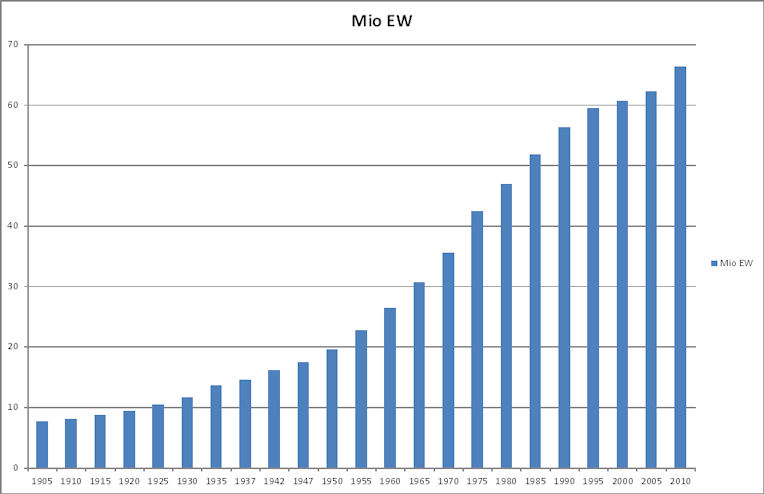
Abb.: Bevölkerung (in Mio. Einwohnern) 1905 bis 2010 (teilweise Schätzungen)
[Datenquelle: Pocket Thailand in figures 1996. -- Bangkok : Alpha Research,
1996. -- ISSN 0858-8297. -- S. 29.]
1905
Herkunft der Einnahmen des Staats (50,46 Mio. Baht):
Abb.: Herkunft der Staatseinnahmen 1905 (50,46 Mio. Baht)
[Datenquelle: Ingram (1971), S. 185]
1905 - 1944
Abb.: Zuwachs der Reisanbaufläche in Zentralthailand und im übrigen Thailand 1905 - 1944 in Mio. Rai (ไร่)
[Datenquelle: Ingram (1971), S. 44]
1890 - 1940
Preise für einen Wasserbüffel bzw. einen Ochsen in der Umgebung Bangkoks in Baht, 1890 - 1940:
Abb.: Wasserbüffel, Lopburi (ลพบุรี), 2300 v. Chr., Berlin Museum für indische Kunst
[Bildquelle: Wikimedia. -- Public domain]
Abb.: Preise für einen Wasserbüffel bzw. einen Ochsen in der Umgebung Bangkoks in Baht, 1890 - 1940
[Datenquelle: Ingram (1971), S. 64]
1905
Aufnahme einer ausländischen Staatsanleihe von £1 Mio. für den Eisenbahnbau. Verzinsung: 4,5%.
1905

Kedah (قدح) steht vor dem Staatsbankrott und bekommt von Siam eine Anleihe. Als Gegenleistung muss es wie Perlis (s. unten) einen britischen Finanzberater (C.G. Hart) akzeptieren.
Abb.: Lage von Kedah (قدح)
[Bildquelle: Constables Hand Atlas of India, 1893. -- Pl. 59]
1905
Das Erziehungsministerium versucht Schulschwänzen durch ein Belohnungssystem zu bekämpfen:
"The Ministry of Education had also started a campaign against school absenteeism by giving awards to industrious students. This scheme was commenced in 1905 when students who had attended school every day throughout the year were given a certificate. A total of nine such certificates could be obtained. In addition, a pupil who had received three certificates also received a copper medal; when six such certificates had been obtained the pupil was awarded a silver medal; and the proud possessor of nine certificates received a gold medal. To further encourage the spirit of competition, the Ministry of Education initiated a custom of announcing the schools where percentage of attendance was the highest. The awarding of regular attendance certificates has now been abolished because it led to abuse by encouraging sick children to attend school." [Quelle: Manich Jumsai [มานิจ ชุมสาย] <1908 - 2009>: Compulsory education in Thailand. -- Paris : UNESCO, 1951. -- 110 S. ; 22 cm. -- (Studies in compulsory education ; VIII). -- S. 33f. -- Fiar use.]
1905
Zwischen 400 und 600 Mädchen in Bangkok erhalten Schulunterricht. Sie stammen vorwiegend aus der Oberschicht.
1905
Gesetz über die Meldepflicht von Pest (R. S. 124)
1905
Einführung der Wehrpflicht (Musterung) in vier Provinzen
"In 1905 conscription was established in four provinces, and it is to be extended to two others in 1906. In these provinces the old dependents of other departments, men who have hitherto, for the most part, paid the Capitation tax, are now transferred to the Ministry for War, and cannot therefore claim exemption from the conscription. Payers of annual taxes above a certain value, monks, and some others are, however, exempt, and certain educated classes are reserved for officers. With these exceptions every one must serve three years continuously with the colours between the ages of eighteen and forty. After the three years are over they are placed in three classes of reserves, liable to be called out in time of emergency. The Chinese are not called upon for military service, nor do they pay the Capitation tax, but only a small triennial tax.
The paper strength of the army is very different from its real strength. Up country whole villages are deserted by the men-folk when the time comes round for them to serve, and the recruiting sergeant returns with a band of old men and even women, taken as hostages for the appearance of their sons, who, probably, are amuse themselves meanwhile with a little dacoity. As a fighting force the army cannot be taken very seriously. The soldiers are the worst element of the population and wherever a garrison is stationed brawls and disturbances are of constant occurrence. I am necessarily speaking of the time before conscription was established. Under the new conditions the soldiers in the provinces appear to be completely out of hand. Many Europeans now in Siam believe that the army is a grave menace to the country, for by its lawlessness it may provoke outside intervention. During the late Shan rebellion the troops who were sent up north looted the shops and established a reign of terror on their way through Paknam Po, while in almost the only conflict that took place the Siamese ran away unhurt, and a Danish officer of gendarmerie who was attempting to lead them against the enemy was shot. It is not that the individual Siamese lacks courage. When his blood is up he possesses courage of the most reckless sort, but he is entirely without esprit de corps, and has no idea of patriotism as we understand it. The rivalry which exists between the various schools in Bangkok has, however, of late years done something to foster this spirit. A Siamese who ran from the battle would not be ashamed of the fact, nor would he feel the least hesitation in admitting that he did so because he was afraid.
The Siamese themselves are fully aware that in regular operations against European troops they would have no chance, but they say that they would rely upon guerilla warfare. For this the training of the men, on German lines, seems especially ill- fitted. As it was in Burma, so it would be in Siam — a European force could overrun the country with the utmost ease and the Siamese army would run away; but after, when they saw Europeans sitting in the high places, who can tell what hidden fury of revolt might blaze forth?"
[Quelle: Thompson, Peter Anthony <1876 - >: Siam; an account of the country and the people. -- Boston : Millet, 1910. -- 330 S. : Ill. ; 25 cm. -- (Oriental series ; vol. XVI.). -- S. 76ff.]
1905
Abb.: Rechtsanwälte, 1905
1905
Abb.: Verhör von Strafgefangenen, Nordostthailand, 1905
1905

Rama V. und Kronprinz Vajiravudh besuchen Nordthailand.
1905

Abb.: Königliche Kutsche, 1905
1905

Kronprinz Vajiravudh beginnt mit seinen Kriegs- und Polizeispielen.
"They were elaborately staged. There were two teams, each headed by a command staff which planned the strategy to be carried out by the commissioned and noncommissioned officers and the men. Each side wore a distinguishing color, red or green, and the various grades of soldiers wore appropriate insignia. Firecrackers were used to help produce realism. The games were taken seriously, and the operations were judged by referees. The Crown Prince usually served as the principal referee, although on occasion he commanded one of the combatant teams instead. A general strike of Chinese merchants in Bangkok in June 1910 inspired a variation of the war games: police action against "Chinese" strikers. All the games, including the war games, took place at night after dinner, beginning around 10 p.m. Ordinary games usually lasted until 3 A.M., but the war games went on until 4 or 5 A.M. "
[Quelle: Vella, Walter F. <1924 - 1980>: Chayo! : King Vajiravudh and the development of Thai nationalism / Walter F. Vella, assisted by Dorothy B. Vella. -- Honolulu : Univ. Press, 1978. -- 347 S. : Ill. ; 25 cm. -- ISBN 0-8248-0493-7. -- S. 6]
Kronprinz Vajiravudh baut auch zusammen mit jungen Pagen eine Modell-Stadt mit Selbstverwaltung im Parusakawan-Palast (วังปารุสกวัน) auf.
Abb.: Lage des Parusakawan-Palasts (วังปารุสกวัน)
[Bildquelle: OpenStreetMap. -- Creative Commons Lizenz (Namensnennung, share alike)]
1905
Abb.: Der Mekong 1905 (ແມ່ນ້ຳຂອງ / แม่น้ำโขง / មេគង្គ)
1905
Gründung einer Zweigstelle des Sericulture Department in Buri Ram (บุรีรัมย์) zur Förderung der Seidenproduktion.
Abb.: Lage von Buri Ram (บุรีรัมย์)
[Bildquelle: OpenStreetMap. -- Creative Commons Lizenz (Namensnennung, share alike)]
"The extension of the Sericulture Department’s work in the provinces began in 1904 with the establishment of a branch in the provincial capital of Khorat. In the following year a further branch was established at Buri Ram, some 60 miles to the east. Both branches contained a mulberry plantation, a silkworm rearing shed, and facilities for reeling silk. From late 1908 the Khorat branch also had facilities for silk-weaving. It was intended that a relatively few producers from the silk districts around Khorat and Buri Ram would undertake training in modem sericulture techniques at these branches before returning to their communities where, by direct instruction and by their own example, they would disseminate the new sericulture methods among all the silk producers. In most cases the training would last for one year. Each student was to be paid an allowance. The response of the peasantry to this initiative was relatively poor."
[Quelle: Brown, Ian <1947 - >: Government initiative and peasant responde in the Siamese silk industry, 1901 - 1913. -- In: Journal of the Siam Society. -- 68,2 (1980). -- S. 37
1905
Wun Tokkeng (Hoontrakul - ฮุ่นตระกูล) lässt die Gesellschaft für Geldüberweisung in die Heimat (huikuan - 彙款) der Hainanesen (海南人) in Siam vorschriftgemäß registrieren.
1905

Es erscheint:
Jottrand, Émile: Au Siam : journal de voyage de M. et Mme Émile Jottrand. -- Paris : Plon-Nourrit, 1905. -- 539 S. ; 19 cm.Englische Übersetzung:
Jottrand, Émile: In Siam : the diary of a legal adviser of King Chulalongkorn's government / trans. and introd. by Walter E.J. Tips. -- Bangkok : White Lotus, 1996. -- 457 S. : Ill. ; 21 cm. -- ISBN 9748496392Jottrand war 1898-10 - 1902-02 belgischer Rechtsberater in Siam.
Abb.: Einbandtitel
1905

Es erscheint:Whitney, Caspar <1862 - 1929>: New Yorks : Scribner, 1905
Abb.: Haus an Khlong
[a.a.O., nach S. 42]
Abb.: Glücksspiel-Salon, Sampeng
[a.a.O., nach S. 42]
Abb.: Phra Ram und seine Leibdiener
[a.a.O., nach S. 78]
Abb.: Furt
[a.a.O., nach S. 98]
Abb.: Die siamesischen Jäger des Autors
[a.a.O., nach S. 108]
Abb.: Sakai
[a.a.O., nach S. 116]
Abb.: Sakai
[a.a.O., nach S. 118]
1905
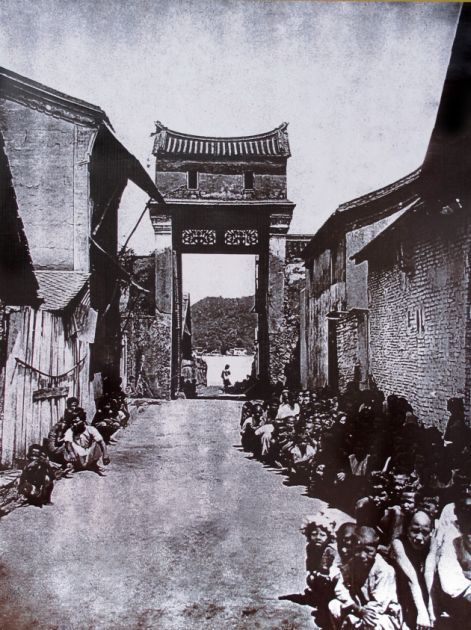
Abb.: Einwohner von Songkhla
(สงขลา)
/ Singora erwarten den Einzug König Chulalongkorns, 1905
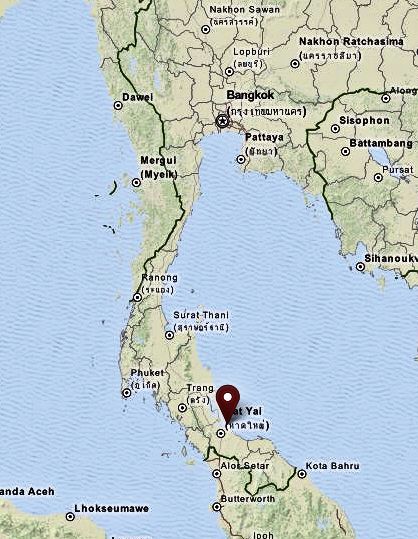
Abb.: Lage von Songkhla
(สงขลา)
/ Singora
[Bildquelle: OpenStreetMap. --
Creative Commons Lizenz (Namensnennung, share alike)]
1905

Die Benchamabophit Temple Fair (งานวัดเบญจมบพิตรดุสิตวนารามราชวรวิหาร) ist besonders groß: 63 Stände, darunter ein königlicher Stand, an dem Fotoabzüge von Fotos verkauft werden, die Rama V. gemacht hat. Auch ein Fotowettbewerb findet statt. Am Wettbewerb nehmen 140 Personen teil, darunter 67 Ausländer.
Abb.: Lage des Wat Benchamabophit (วัดเบญจมบพิตรดุสิตวนารามราชวรวิหาร)
[Bildquelle: OpenStreetMap. -- Creative Commons Lizenz (Namensnennung, share alike)]
1905


Abb.: Buddhatempel in Siam
[Bildquelle: Liebig's Sammelbilder, 1905]
1905
In 18 Provinzen Siams wird fotografiert.
1905-11

Der Japaner Watanabe Tomoyori (友寄渡辺) eröffnet mit "Japanese Cinematograph" das erste Kino in Bangkok. Er zeigt japanische Dokumentarfilme und westliche Filme. หนังใหญ่ ("japanisches Schattenspiel") wird zum Begriff für Kino. 1907 verkauft Watanabe das Kino an einen anderen Japaner. Bis dahin hat er einen Reingewinn von 100.000 Baht gemacht.
1905
Der König ernennt eine Kommission zur Organisation von Drachen-(ว่าว)-Wettkämpfen sowie zur Formulierung von Regeln dafür.
Abb.: Drachen (ว่าว), Buriram Kite Festival (งานมหกรรมว่าวอีสานบุรีรัมย์), 2009
[Bildquelle: Narisa Spaulding. -- http://www.flickr.com/photos/narisa/4227873392/. -- Zugriff am 2012-03-25. -- Creative Commons Lizenz (Namensnennung, keine kommerzielle Nutzung, keine Bearbeitung)]
Abb.: Lage von Buriram (บุรีรัมย์)
[Bildquelle: OpenStreetMap. -- Creative Commons Lizenz (Namensnennung, share alike)]
Abb.: Drachenkampf, ca. 1967. Links: ว่าวจุฬา, rechts: ว่าวปักเป้า
1905

Abb.: Eine der Frauen Ramas V. mit Ziehharmonika, ca. 1905
1905
Es erscheint die erste chinesischsprachige Zeitung Siams
1905
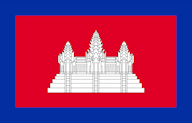
Im französischen Protektorat Kambodscha besuchen vom Protektorat beaufsichtigte Schulen (d.h. keine Schulen für Knaben in buddhistischen Klöstern):
Phnom Penh: 750 Schüler, davon 29 Prinzen und 25 Prinzessinnen
Übriges Kambodscha: 400 Schüler
Ca. die Hälfte der Schüler sind vermutlich Khmer (ខ្មែរ)
1905

Abb.: The world's constable: US-Präsident Theodore Roosevelt (1858 - 1919) als Weltpolizist / von Louis Dalrymple (1866 _ 1905), 1905
ca. 1905

Abb: Empire d'Asie / von Georges Bigot (1860-1927), 1904/1905
1905

Es erscheint:
Claude Farrère <1876 - 1957>: Les Civilisés : roman. -- Paris : Ollendorff, 1905. -- 319 S.
Abb.: Umschlagtitel einer späteren Ausgabe
"Les Civilisés est un roman de Claude Farrère publié en 1905 chez Paul Ollendorff1 et qui fut récompensé par le prix Goncourt la même année. Résumé
A la fin du XIXème siècle , Raymond Mévil, médecin, Capitaine Torral, ingénieur, et Jacques-Gaston de Civadière , comte de Fierce et officier de marine, profitent de la vie à Saïgon , capitale de la colonie française de Cochinchine. Ils profitent de leurs statuts de Français colonisateurs pour se livrer à la débauche, au stupre, à la fornication et à la consommation d'opium dans les différents quartiers, rues et maisons de Saïgon aussi bien avec les différentes ethnies s'y trouvant , annamites, chinois , japonais… qu'avec les Français installés. Alors que Torral apprécie cette vie, Mévil et Fierce remettent en cause leurs attitudes et comportements en cherchant l'amour , le véritable amour. Mévil est éconduit aussi bien par la femme d'un homme marié, Mme Malais, que par une jeune femme, Marthe Abel, car les 2 femmes connaissent sa façon de vivre et n'arrivent pas à avoir confiance en lui. Fierce tombe amoureux de Sélysette Sylva et, après une cour assidue, reçoit une réponse positive à sa demande en mariage. Il repart en manœuvre avec son bateau, le Bayard , n'arrive pas à se contrôler et replonge dans sa vie antérieure : Sélysette le découvre et annule le mariage prévu. La guerre éclate avec l'Angleterre : pendant que Torral déserte pour continuer à profiter de la vie , que Mévil se laisse dépérir et meurt renverser par la victoria de Mme Malais, Fierce obtient la responsabilité d'un torpilleur et meurt en héros volontaire en attaquant et détruisant un cuirassé anglais , le King Edward."
[Quelle: https://fr.wikipedia.org/wiki/Les_Civilis%C3%A9s_%28roman,_1905%29. -- Zugriff am 2016-02-26]
"Claude Farrère’s Les Civilisés had far greater vogue with less reason and worse consequences. The horrible picture he painted of colonial society, made up of the dregs of European failures, in conjunction with the more civilized Asiatics, whose nominal but not spiritual masters they were, confirmed the French public’s worst suspicions about the moral bankruptcy of their colonies. This can be partly traced to the exotic tradition of the noble savage-native uncorrupted by so-called civilization, but it is also due to the inveterate bourgeois distrust of the adventurer. The French public is chronically prone to believe the worst about its own colonials and the best about its native subjects—a viewpoint that has been profitably exploited by journalists who proclaim that the colony is lost at the slightest disturbance." [Quelle: Thompson, Virginia <1903 - 1990>: French Indo-China. -- London : Allen, 1937. -- 516 S. ; 24 cm. -- S. 405. -- Fair use]
1905

Markteinführung des Lokalanästhetikums Procain (Markennamen: ®Novocain). Es ist lange Zeit das wichtigste lokale Betäubungsmittel in der Zahnmedizin. Es wurde 1904 von den deutschen Chemikern Alfred Einhorn (1856 - 1917) und Emil Julius Uhlfelder (1871–1935) synthetisiert.
1905
Handfeuerwaffen um 1905:
Abb.: Handfeuerwaffen I
Abb.: Handfeuerwaffen II
Abb.: Handfeuerwaffen III
[Quelle der 3 Abb.: Meyers Großes Konversations-Lexikon, 1905ff.]
1905

Im 38. Thronjahr des japanischen Tenno wird im japanischen Militär das Standard-Infanteriegewehr Arisaka Typ 38 (三八式歩兵銃) eingeführt. Bis 1940 werden über 3 Mio. Exemplare an das japanische Heer geliefert.
Abb.: Arisaka Typ 38 (三八式歩兵銃)
[Bildquelle: Ca.garcia.s / Wikipedia. -- Creative Commons Lizenz (Namensnennung, share alike)]
1905
Schiffskanone um 1905:
Abb.: Krupp 21 cm-Kanone L735
[Bildquelle: Meyers Großes Konversations-Lexikon, 1905ff.]
1905
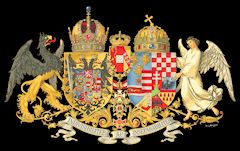
Austro-Daimler baut den ersten echten Panzerwagen (mit Allradantrieb) der Welt für die k. u. k. Armee.
Abb.: Austro-Daimler-Panzerwagen, 1905
[Bildquelle: Wikimedia. -- Public domain
1905

In New York werden Riesen-Automobile als Sightseeing-Busse verwendet.
Abb.: Sightseeing-Bus, New York, 1905
1905-01

Aus dem Tagebuch des in Siam tätigen kanadischen Eisenbahningenieurs Henry Gittins (1858 - 1937):
"To the Treasury at Paknam Pho [ปากน้ำโพ = Nakhon Sawan - นครสวรรค์] to draw 40,000 ticals. They handed it over and after signing for it, I took it away to the launch. Whilst waiting in the launch, it struck me as being a lot of notes for the amount. I then checked it and found that I had been paid 72,000 too much, the mistake being in four packets of notes which had been given to me as bundles of 2000, whereas in reality they were bundles of 20,000 ticals. As they were new packets, I had accepted them with only a casual glance. Being (unfortunately for my chances of becoming wealthy) born more or less honest (I hope more), I returned to the Treasury with it. Some days after this, when Müller (Chief Overseer) was talking with the Second Governor about the above matter, he (the latter) remarked, ‘What a fool. Why didn’t he keep it?’" [Zitiert in: Gittins, Paul <1964 - >: On track : Henry Gittins, railway pioneer in Siam and Canada. -- Bangkok : River, 2014. -- 151 S. : Ill. ; 21 cm. -- ISBN 978-616-7339-42-9. -- S. 107. -- Fair use]
1905-01-02

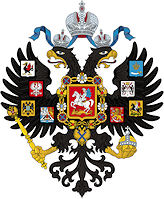
Port Arthur muss sich den Japanern ergeben. Russland muss die Festung Port Arthur den Japanern übergeben.
Abb.: Lage von Port Arthur
[Bildquelle: OpenStreetMap. -- Creative Commons Lizenz (Namensnennung, share alike)]
Abb.: Wracks der russischen Marine vor Port Arthur, 1905
[Bildquelle: Wikipedia. -- Public domain]
Abb.: Der japanische Tenno zähmt den russischen Bären / von Raphale Kirchner <1876 - 1917>. -- In: L'Assiette au beurre <Paris, Frankreich>. -- 1906-11-13.
1905-01-04
Der Kronprinz eröffnet die Eisenbahnlinie Bangkok - Ta Chin (1906 bis Samut Songkhram - สมุทรสงคราม weitergeführt)
"In 1902 another private company was formed to connect Bangkok with Tachin, an important fishing village some 34 kilometres to the west of Bangkok. The king granted this company a concession on liberal terms, but before the line was opened another company was formed to connect Tachin with Meklong, still further to the west. The two companies have since amalgamated, and are now known as the Meklong Railway Company, Ltd. The Bangkok-Tachin line was opened by H.R. H. the Crown Prince in 1904. The entire line from Bangkok to Meklong is 69 kilometres in length ; it passes through an extremely fertile district, and is paying well."
[Quelle: Twentieth century impressions of Siam : its history, people, commerce, industries, and resources / ed. in chief: Arnold Wright. -- London [etc.] : Lloyds, 1908. -- S. ]
1905-01-08

Die letzten französischen Besatzungstruppen verlassen Chantaburi (จันทบุรี). Die Franzosen hatten Chantaburi nach der Paknam-Aggression (1893) besetzt.
Abb.: Lage von Chantaburi - จันทบุรี
[Bildquelle: NordNordWest / Wikipedia. -- GNU FDLicense]
1905-02

Der deutsche Physiker Albert Einstein veröffentlicht den Aufsatz
Zur Elektrodynamik bewegter Körper. -- In: Annalen der Physik und Chemie. -- 17, 1905. -- S. 891–921
Darin stellt er die später so genannte Spezielle Relativitätstheorie dar
Abb.: Erste Seite von Einsteins Aufsatz
Abb.: Albert Einstein
[Bildquelle: DonkeyHotey. -- http://www.flickr.com/photos/donkeyhotey/12657946083/. -- Zugriff am 2014-02-21. -- Creative Commons Lizenz (Namensnennung)]
1905-02-09
Steuerpächter für Glücksspiele werden abgeschafft.
1905-02-25 - 1905-11-04

Es erscheint der Roman:
Sinclair, Upton <1878 – 1968>: The jungle. -- In: Appeal to Reason <Kansas City>. -- 1905-02-25 -- 1905-11-04
1906-02 erscheint der Roman in Buchform:
Sinclair, Upton <1878 – 1968>: The jungle. -- New York : Grosset & Dunlap, 1906. -- 413 S.
Abb.: Titelblatt
"Bei diesem Roman geht es um die Ausbeutung der Arbeiter und die hygienischen Missstände in den Schlachthöfen und Konservenfabriken in den Union Stock Yards Chicagos. Mit dem Beispiel einer Einwandererfamilie aus Litauen veranschaulichte Sinclair die katastrophalen Auswirkungen eines von Profitwahn und Korruption diktierten US-amerikanischen Kapitalismus im ausgehenden 19. Jahrhundert." [Quelle: https://de.wikipedia.org/wiki/Der_Dschungel. -- Zugriff am 2015-10-27]
Der Roman führte in den USA u.a. zum Federal Meat Inspection Act of 1906 und zum Pure Food and Drug Act of 1906
1905-03-01

"Bangkok, 1. 3. 05 Die siamesischen Staatsbahnen beschäftigen im Betriebe 243 Beamte und in der Verwaltung und im Bau 70 Beamte. Das macht zusammen 313 Beamte. Das Betriebspersonal ist fast durchwegs siamesisch. Im Bau dagegen überwiegt das europäische Personal. Von den 17 Sektionsingenieuren sind
- acht deutsch,
- vier Engländer,
- zwei Siamesen,
- zwei Dänen und
- ein Italiener."
[Quelle: Weiler, Luis <1863 - 1918>: Anfang der Eisenbahn in Thailand. -- Bangkok : Chalermnit, 1979. -- 282 S. : Ill. ; 19 cm. -- S. 129]
1905-03-03

Dem deutschen Zoologen Fritz Schaudinn (1871 - 1906) und dem Berliner Hautarzt Erich Hoffmann (1868 - 1959) gelingt der Nachweis des Erregers der Syphilis, Treponema pallidum
Abb.: Treponema pallidum (die fadenförmigen Gebilde = Spirochäten) in Vorhaut-Syphilis, nach einem Präparat von Erich Hoffmann, 1907
1905-03-18

Rama V. an Prinz Paripatra Sukhumbhand, the Prince of Nakhon Sawan ( สมเด็จพระเจ้าบรมวงศ์เธอ เจ้าฟ้าบริพัตรสุขุมพันธุ์ กรมพระนครสวรรค์วรพินิต, 1881 - 1944) über den erzwungenen Rücktritt wegen Korruption und Unfähigkeit des damaligen Unterrichtsministers Phraya Phatsakorawong (Phon Bunnag) [พระยาภาสกรวงศ์ (พร บุนนาค), 1849–1920] am 1902-04-18:
"When the time comes to draw up the budget, those who do so decide first which departments should have their funds cut. The departments whose funds are usually cut are like wells, and tend to be departments with weak ministers and directors, like the various departments of the Ministry of Public Instruction, which are worse than wells—they have been veritable lakes. If anyone is short of funds, they take it from them. I watched and guarded that Ministry with meticulous care for two years, but I was unable to bring it to life, as the head of the Ministry and the heads of the departments were unreliable. They could devise fine programs, but they could not explain them. I helped them get money, and then they did not do the work. The end result was that the head of the [Education] Department and the Minister had to be replaced." [Übersetzung: Wyatt, David K. <1937 - 2006>: The politics of reform in Thailand : education in the reign of King Chulalongkorn. -- New Haven : Yale UP, 1969. -- 425 S. : Ill. ; 23 cm. -- (Yale Southeast Asia studies ; 4). -- SBN 300-01156-3. -- S. 297]
1905-03-24

Unterzeichnung der Convention with Denmark.
1905-03-24


Ausgabe einer Staatsanleihe Siams in London und Paris.
1905-03-31

Abb.: Rama V. mit befreiten Sklaven, 1905-03-31
1905-04 - 1905-09
Es erscheint
ทรง อานุภาบ [Song Annuphap = ดำรงราชานุภาพ <สมเด็จพระเจ้าบรมวงศ์เธอ กรมพระยา> - Damrong Rajanubhab] <1862 - 1943>: จดหมายนายทรงอานุภาบ เล่าเรึ่องประบาสตัน เมื่อ ร.ศ. ๑๒๓ [Briefe von Nai Song Anuphap über die inoffizielle - inkognito - Reise des Königs im Jahr 1904]. -- In: ทวีปัญญา [Thawie Panya]. -- [1905-04 - 1905-09]. -- 1912 veröffentlicht der Autor die Briefe in einem Privatdruck für seine Freunde, 1923 erscheint ein Reprint.
1905-04-01
Law for the Abolition of Slavery
"The following is a translation of a law which came into force on the 1st April, 1905: Although slavery in Our realm is very different from slavery as it has existed in many other countries—most slaves being persons who have become so voluntarily and not by force, and the powers of the master over the slave being strictly limited—yet We have always considered that the institution even in this modified form is an impediment to the progress of our country. We have, therefore, from the commencement of Our reign taken steps, by the enactment of laws and otherwise, for the abolition of slavery, notably by the law of Pee Chau [ปีจอ] (corresponding to Ratanakosindr Sok 93 and the year 1874 of the Christian era).
We now deem it time to take more sweeping measures which will gradually result in the entire disappearance of slavery from Siam, and to that end We are pleased to decree as follows:
§ 1. This law shall be known as the Law for the Abolition of Slavery, Ratanakosindr Sok 124.
§ 2. This law shall come into force on the first of April, Ratanakosindr Sok 124, throughout the Kingdom except in the Monthons of Bayap [มณฑลพายัพ] and Burapha [มณฑลบูรพา], where We have already enacted special laws on the subject, and also except in the Monthon of Saiburi [ໄຊຍະບູລີ] and in Kelantan [كلنتن] and Tringganu [ترڠڬانو], where the laws of the religion of the people are still in force.
§ 3. All children born of parents who are slaves shall be free without the execution of the condition stated in the law of Pee Chau.
§ 4. No person now free can be made a slave. If any person now a slave shall hereafter become free, he cannot thereafter again become a slave.
§ 5. Wherever any person is now held a debt slave, the master shall credit upon the principal of the debt for which he is held a slave the sum of four (4) ticals for each month after the first of April, 124, provided that no credit shall be allowed for any time during which the slave may desert his master.
§ 6. If a slave changes his master, no increase shall be made in the debt for which he is actually held; that is to say, when the slave is transferred from one master to another, he can be held by the new master only for the amount of the debt actually due the old master at the time of the transfer.
Done in Bangkok on this the 31st day of March, Ratanakosindr Sok 123 [รัตนโกสินทรศก]."
[Quelle: Directory for Bangkok and Siam 1914. -- Bangkok : Bangkok Times, 1914. -- 380, 155 S. : Ill. ; 23 cm. -- S. 39]
1905-04-08
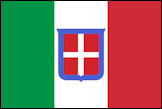
Unterzeichnung einer Abmachung über die Gerichtsbarkeit über Italiener in Siam.
1905-04-30

Eröffnung der anglikanischen Christ Church in Bangkok
"In 1903 the Rev. H. De Blakeney was appointed chaplain, but by this time the Church of England community had increased so much since the Union Chapel was built, that it was decided to build a larger church. The king was again asked for the ground, which he willingly gave, and further, he allowed the committee to sell the old site. The money thus obtained helped to a large extent to defray the expense of building the present church, which was opened for service on Sunday, April 30, 1905, under the name of Christ Church. When the church was being built it was decided to build a chaplaincy beside it, which was accordingly done. The church contains a Willis two-manual organ, and is fitted with electric light. There is a surpliced choir, and the services are fully choral. Neither of the churches was consecrated, as they are not under the jurisdiction of any bishop, but it is now proposed that Siam should be placed under the See of Singapore."
[Quelle: Hernry J. Hillyard in: Twentieth century impressions of Siam : its history, people, commerce, industries, and resources / ed. in chief: Arnold Wright. -- London [etc.] : Lloyds, 1908. -- S. 217]
1905-05-04

Abb.: Lage von Petriu [แปดริ้ว = Chachoengsao - ฉะเชิงเทรา]
[Bildquelle: OpenStreetMap. -- Creative Commons Lizenz (Namensnennung, share alike)]
"Bangkok, 4. 5. 05 Wir haben nunmehr die Genehmigung zum Bau der 62 km langen vollspurigen Bahn von Bangkok nach Petriu [แปดริ้ว = Chachoengsao - ฉะเชิงเทรา] am Bang Pakongfluss [แม่น้ำบางปะกง] erhalten. Für das erste Baujahr sind 900000 Ticals bewilligt worden. Ich beabsichtige erst im November mit dem Bau zu beginnen, da einerseits die Regenzeit vor der Türe steht und ich auch eine bedeutende Linienverlegung noch vorher studieren lassen will. Die Bahn führt durch völlig flaches Land, welches auf große Strecken hin während eines großen Teiles des Jahres überschwemmt ist. Im übrigen sind keine großen technischen Schwierigkeiten zu überwinden. Die zahlreichen Kanäle, welche das Land durchschneiden, werden auf hölzernen Jochbrücken überschritten."
[Quelle: Weiler, Luis <1863 - 1918>: Anfang der Eisenbahn in Thailand. -- Bangkok : Chalermnit, 1979. -- 282 S. : Ill. ; 19 cm. -- S. 131]
1905-05-07

Der britische Gesandte Ralph Spencer Paget (1864 – 1940) an den britischen Außenminister Edward Grey, 1st Viscount Grey of Fallodon (1862 – 1933):
"S. z.B. den Bericht des Pagets, in dem alle ausgeprägten Eigenschaften der als gänzlich von einer apathischen Bevölkerung abgehoben geschilderten Eliten ausländischem Einfluss zugeschrieben werden: Chulalongkom verdanke seinen „practical bent of mind, which is usually foreign to the Siamese temperament"seiner laotischen Mutter, und Damrong [Prinz Damrong Rajanubhab - สมเด็จพระเจ้าบรมวงศ์เธอ พระองค์เจ้าดิศวรกุมาร กรมพระยาดำรงราชานุภาพ, 1862 -1943] sei
„remarkable for a tenacity of purpose and activity altogether foreign to the Siamese character".
Bezeichnend auch das Urteil über Außenminister Devawongse [Prinz Devawongse Varopakar - สมเด็จพระเจ้าบรมวงศ์เธอ กรม พระยาเทวะวงศ์วโรปการ, 1858 - 1923]:
„Having a large leaven of Chinese blood in his veins, he has in his difficult office shown an astuteness more Chinese than Siamese, and a capacity for cajolerie and prevarication, not unmixed with mendacity and deceit, which is the essence of Oriental diplomacy""
[Quelle: Petersson, Niels P.: Imperialismus und Modernisierung : Siam, China und die europäischen Mächte 1895 - 1914. -- München : Oldenbourg, 2000. -- 492 S. ; 25 cm. -- (Studien zur internationalen Geschichte ; Bd. 11). -- ISBN 3-486-56506-0. -- Zugl.: Hagen, Fernuniv., Diss., 1999. -- S. 362, Anm. 68]
1905-05-11
Gründung der Suranaree Wittaya School (โรงเรียนสุรนารีวิทยา) in Nakhon Ratchasima (นครราชสีมา).
Abb.: Lage von Nakhon Ratchasima (นครราชสีมา)
[Bildquelle: OpenStreetMap. -- Creative Commons Lizenz (Namensnennung, share alike)]
1905-05-27


Japan vernichtet in der Seeschlacht von Tsushima (対馬海戦) die russische Baltikumflotte.
Abb.: Lage der Straße von Tsushima (対馬)
[Bildquelle: OpenStreetMap. -- Creative Commons Lizenz (Namensnennung, share alike)]
Abb.: Karte der Seeschlacht von Tsushima (対馬海戦)
[Bildquelle: Ziegelbrenner / Wikipedia. -- GNU FDLicense]
Abb.: Die Kapitulation von Admiral Sinowi Petrowitsch Roschestwenski (Зиновий Петрович Рожественский, 1848 - 1909), 1905
[Bildquelle: Wikimedia. -- Public domain]
1905-06

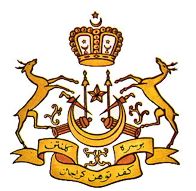
Rama V. und Söhne besuchen Kelantan (كلنتن).
Abb.: Rama V. und Söhne mit dem Raja von Kelantan , 2005-06
Abb.: Lage von Kelantan (كلنتن)
[Bildquelle: Constables Hand Atlas of India, 1893. -- Pl. 59]
1905-06-01
Hackney Carriage Act (Mietwagen-Gesetz) tritt in Kraft
1905-06-07
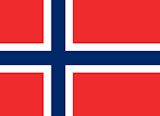
Das Parlament Norwegens erklärt die Union mit Schweden für aufgelöst und setzt Oscar II. (1829 - 1907) als König von Norwegen ab. 1905-11-18 wird Christian Frederik Carl Georg Valdemar Axel, prins til Danmark og Island (1872 - 1957) zu König Håkon VII. von Norwegen gewählt.
Abb.: Abgewählt: Oscar II., 1900
[Bildquelel: Wikipedia. -- Public domain]
Abb.: Ersatzwahl: Christian Frederik Carl Georg Valdemar Axel, prins til Danmark og Island / von Leslie Ward (1851 - 1922)
[Bildquelle: Vanity fair. -- 1902-06-12 / Wikimedia. -- Public domain]
1905-06-19
Neues Grundsteuer-Recht.
"Vom 19. Juni des Jahres 1905 an trat dann ein ganz neues System an Stelle des alten. Von jetzt ab wird die Höhe der Steuersätze nach dem Werte des Grund und Bodens, nach der Produktionsfähigkeit der Äcker selbst bestimmt. Nach diesem neuen System unterscheidet man auch drei Arten von Feldern: „Ti Huang Ham"; „Na Fang Loi" und „Na Kuko".
Die beiden letzteren Bezeichnungen sind zwar dem alten System entlehnt, haben aber jetzt eine ganz andere Bedeutung.
Unter „Ti Huang Ham" versteht man jetzt solche Grundstücke, die zwar schon erworben, aber noch nicht urbar gemacht worden sind. „Na Fang Loi" sind solche Felder, die schon urbar gemacht sind, aber noch nicht vollständig sich in Ordnung befinden (einige Stücke der Ländereien sind schon im Anbau). Außerdem gehören hierhin die Felder, die an den Abhängen oder in den engen, schmalen Bergtälern liegen, und nicht von besonderer Fruchtbarkeit sind, so dass sie nur in einzelnen Jahren d. h. zur großen Regenzeit, einigen Ertrag liefern. „Na Kuko" endlich sind solche Felder, die schon urbar gemacht und in Ordnung gebracht sind und regelmäßig jährliche Erträge liefern.
Die letztere Felderart, die der „Na Kuko" wird in fünf Klassen eingeteilt. Diese Einteilung beruht auf der Fruchtbarkeit, der Qualität des Produktes u. s. w. Nach diesen Klassen wird die Höhe der Steuersätze folgendermaßen bestimmt:
Die „Ti Huang Ham", d. h. die Grundstücke, die noch nicht urbar gemacht sind, werden jetzt auch vom dritten Jahre an, wenn sie auch noch nicht in Anbau genommen sind, besteuert1), und zwar mit dem achten Teile der Steuersätze für die „Na Kuko "-Felder.
Die „Na Fang Loi "-Felder dagegen werden besteuert nach der bebauten Fläche wie früher. Außerdem wird aber jetzt auch noch ihre Fruchtbarkeit, Qualität der Produkte und die Gegend, wo sie liegen, taxiert und die Steuersätze sind um den vierten Teil höher als diejenigen für die „Na Kuko"-Felder2).
Wie früher, so werden auch jetzt bei Überschwemmungen und anderen Naturereignissen, wodurch Schaden angerichtet wird, die Steuern ganz oder zum Teil aufgehoben."
[Quelle: Dilock <Prinz von Siam> [Diloknobbarath, Prince of Sarnga - พระเจ้าบรมวงศ์เธอ พระองค์เจ้าดิลกนพรัฐ กรมหมื่นสรรควิสัยนรบดี] <1884 - 1912>: Die Landwirtschaft in Siam : ein Beitrag zur Wirtschaftsgeschichte des Königreichs Siam. -- Leipzig : Hirschfeld, 1908. -- 215 S. -- Zugleich: Univ. Tübingen, Diss. 1907. -- S. 84f.]
1905-06-27
In seiner Zeitung ตุลวิภาคพจนกิจ ["Abwägende Worte"] veröffentlicht เทียนวรรณ aka. ต.ว.ส. วัณณาโภ [Thianwan aka. T. W. S. Wannapho , 1842 - 1915] einen Artikel, in dem er sehr moderne Auffassungen über Frauen vertritt.
Aus seiner Analyse der Ist-Zustands:
"five times as many women in the gambling dens as there were men. And what is more, I have seen depressingly large numbers of our women working as prostitutes, parading up and down the streets at night. Even during the day I have seen respectable looking women going out to illicit places where, I’ve heard, they sell their bodies. This distresses me enormously." [Übersetzt von Scot Barmé. -- In: Genders & sexualities in modern Thailand / edited by Peter A. Jackson [1955 - ] & Nerida M. Cook. -- Chiang Mai : Silkworm, 1999. -- 289 p. ; 23 cm. -- ISBN 9747551071. -- S. 138f.]
1905-07/09

"Die französischen Anstrengungen konzentrierten sich deshalb auf die Provinz Battambang [បាត់ដំបង / พระตะบอง], und Siam ließ sich in der Tat überreden, dort einen französischen Offizier als Berater des lokalen Potentaten Phya Kathathorn einzusetzen. Am Quai d’Orsay gab man dem Offizier noch einmal die Mahnung mit auf den Weg, „qu’il n’est point un fonctionnaire chargé de restreindre l’action des autorités locales au profit de la cour de Bangkok, mais surtout un délégué du Gouvernement français dont la présence doit avoir pour conséquence de fortifier la situation et l’indépendance du Phya."
Dies bedeutete nicht zuletzt, sich gegen die Umsetzung der von Bangkok betriebenen Verwaltungsreformen in Battambang zu stellen:
„il aurait été préférable de ... contrôler l’administration du pays plutôt que d’entraver son action",
doch Reformen, die den Einfluss Bangkoks stärkten, wollte man nicht zulassen."
[Zitiert in: Petersson, Niels P.: Imperialismus und Modernisierung : Siam, China und die europäischen Mächte 1895 - 1914. -- München : Oldenbourg, 2000. -- 492 S. ; 25 cm. -- (Studien zur internationalen Geschichte ; Bd. 11). -- ISBN 3-486-56506-0. -- Zugl.: Hagen, Fernuniv., Diss., 1999. -- S. 291]
In einer geheimen Instruktion verpflichtet Frankreich den französischen Finanzberater in Battambang, dafür zu sorgen, dass die Steuereinnahmen der Provinz unter lokaler Kontrolle bleiben und nicht für die "Siamisation" verwendet werden.
Abb.: Lage von Battambang [បាត់ដំបង / พระตะบอง] (Stand 1970!)
[Bildquelle: CIA. -- Public domain]
1905-07-18


Der britische Gesandte Ralph Spencer Paget (1864 – 1940) an Walter L. Langley, Beamter des Foreign Office in London:
"„There are quite a number of cars in Bangkok now — about 30 — so we are not so uncivilized after all",
meinte Paget, der für sich einen gebrauchten 10-PS-Renault erworben hatte. Nun konnte man auch in Bangkok bei Verkehrsunfällen auf moderne, also zivilisierte Weise ums Leben kommen, wie Paget weiter berichtete:
„The other day the Crown Prince asked me whether I had run over a Chinaman yet. I said ,no, two dogs had been my bag'. He said with great glee ,Oh I got a Chinaman the other day it cost me 5 Ticals'"."
[Quelle: Petersson, Niels P.: Imperialismus und Modernisierung : Siam, China und die europäischen Mächte 1895 - 1914. -- München : Oldenbourg, 2000. -- 492 S. ; 25 cm. -- (Studien zur internationalen Geschichte ; Bd. 11). -- ISBN 3-486-56506-0. -- Zugl.: Hagen, Fernuniv., Diss., 1999. -- S. 98]
Abb.: Renault Type I (1902), Einzylindermotor mit 10 PS. 2009
[Bildquelle: Peter Trimming. -- http://www.geograph.org.uk/photo/1565031. -- Zugriff am 2014-12-01. -- Creative Commons Lizenz (Namensnennung, share alike)]
1905-07-20

Beginn des Boykotts chinesischer Waren in China und Südostasien. Der Boykott richtet sich gegen die Misshandlung chinesischer Immigranten in den USA. In Siam weigern sich chinesische Dockarbeiter, US-Waren zu entladen, z.B. Weizenmehl, Zigaretten oder petroleum. Chinesische Importeuere senden alle boykottierten Waren zurück nach Hong Kong und Singapur. Triaden überprüfen die Geschäfte in Bangkok und konfiszieren chinesische Zigaretten und bringen sie zum Tian Fah Hospital ( 泰京天華慈善醫院 / โรงพยาบาลเทียนฟ้า). Mitte Oktober wird der Boykott von Weizenmehl und Petroleum gelockert.
1905-08

Abb.: Rama V. mit seinem Kabinett, 1905-08
1905-08-12


In einem Vertrag (Anglo-Japanische Allianz - 日英同盟) über die Erhaltung der gemeinsamen Interessen in Ostasien und Indien anerkennt Großbritannien Japans "Recht" auf Korea an und Japan anerkennt die "Rechte" Großbritanniens in Indien. Sie verpflichten sich zu gegenseitiger militärischer Hilfe im Falle eines Angriffs in Ostasien. China wird Sicherheit, Unabhängigkeit und Integrität versprochen.
"The Governments of Great Britain and Japan, being desirous of replacing the Agreement concluded between them on the 30th of January 1902, by fresh stipulations, have agreed upon the following Articles, which have for their object:
- The consolidation and maintenance of general peace in the regions of Eastern Asia and India;
- The preservation of the common interests of all Powers in China by insuring the independence and integrity of the Chinese Empire and the principle of equal opportunities for the commerce and industry of all nations in China;
- The maintenance of the territorial rights of the High Contracting Parties [viz., Britain and Japan] in the regions of Eastern Asia and of India, and the defence of their special interests in the said regions
[...]
Article IIIJapan possessing paramount political, military and economic interests in Korea, Great Britain recognizes the right of Japan to take such measures of guidance, control and protection in Korea as she may deem proper and necessary to safeguard and advance those interests, provided always that such measures are not contrary to the principle of equal opportunities for the commerce and industry of all nations.
Article IVGreat Britain having a special interest in all that concerns the security of the Indian frontier, Japan recognizes her right to take such measures in the proximity of that frontier as she may find necessary for safeguarding her Indian possessions."
1905-08-20

Tokyo (東京, Japan): Gründung von Tongmenghui (同盟會) durch Sun Yat-sen (孫逸仙, 1866 - 1925), Song Joaoren (宋教仁, 1882 - 1913) und andere. Ein siamesischer Zweig wird 1907 gegründet.
"Tongmenghui (chinesisch 同盟會 / 同盟会, Pinyin Tóngménghuì, W.-G. T'ung-meng Hui ‚Gesellschaft der (revolutionären) Allianz‘, gelegentlich auch mit ‚Schwurbund‘ übersetzt) war eine von Sun Yat-sen (孫逸仙, 1866 - 1925) 1905 in Tokio gegründete Gesellschaft. Sie war ein Zusammenschluss aus mehreren kleinen revolutionären Gruppierungen, die davor autonom agierten und verstand sich zu Anfang noch als Geheimgesellschaft. Geschichte
Das Programm wurde am 30. Juli 1905 in Abwesenheit Sun Yat-sens verabschiedet und beinhaltete 16 Schriftzeichen: 「驅除韃虜,恢復中華,創立民國,平均地權」. Sinngemäß: Vertreibung der tatarischen Lumpen, Wiederbelebung der chinesischen Nation, Gründung einer Republik, Durchführung einer Landreform.
Die Tongmenghui war seit ihrer Gründung bis zur Revolution von 1911, der Xinhai-Revolution (辛亥革命) für eine Reihe von Aufständen verantwortlich. Kerngebiet ihrer Aktivitäten auf dem Festland war die Provinz Guangdong (廣東省).
Nach 1911 kämpften die Mitglieder der Tongmenghui in ihren Provinzen um die Plätze in den Provinzregierungen. In der Zentralregierung der neuen Republik bestand das Kabinett ausschließlich aus Mitgliedern der Tongmenghui.
Im März 1912 wurde die Tongmenghui eine Partei. Nach langen Diskussionen und Sitzungen wurde im August 1912 die Gründung einer neuen Partei beschlossen, welche sich neben der Tongmenghui noch aus mehreren anderen Parteien zusammensetzen sollte: der Guomindang (Kuomintang - 中國國民黨)"
[Quelle: http://de.wikipedia.org/wiki/Tongmenghui. -- Zugriff am 2015-01-25]
1905-08-20
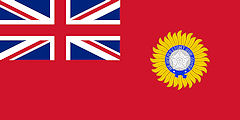
George Nathaniel Curzon, 1st Marquess Curzon of Kedleston (1859 – 1925), der Vizekönig von Indien, tritt zurück. Er ist im Konflikt mit Horatio Herbert Kitchener, 1st Earl Kitchener (1815 - 1916), dem Oberbefehlshaber der indischen Streitkräfte gescheitert. Lord Curzon wollte gegen Kitcheners Willen einen hohen Militär einsetzen.
Abb.: Vizekönig George Nathaniel Curzon, 1st Marquess Curzon of Kedleston, als Krishna
[Bildquelle: Maratha Punch. -- 1899]
Abb.: Horatio Herbert Kitchener, 1st Earl Kitchener / von Leslie Ward (1851 - 1922)
[Bildquelle: Vanity Fair
1905-09

In der Zeitschrift Thawipanya (ทวีปัญญา) veröffentlicht Kronprinz Vajiravudh (วชิราวุธฯ, 1880 - 1925), der spätere Rama VI., unter dem Pseudonym Noila einen Artikel gegen Parlamentarismus. Hätte Siam ein Parlament gäbe es nur endloses Gequassel und Chaos.
1905-09-01
Law on Navigation in Siamese Waters tritt in Kraft.
1905-09-12

Adolph von Prollius (1861 - 1942) ist Minister Resident des Deutschen Reichs, ab 1906 Gesandter.
"Herr Adolph von Prollius, his Imperial German Majesty's Envoy Extraordinary and Minister Plenipotentiary in Bangkok, was born on January 12, 1861, at Schwerin in Mecklenburg. He is the son of the minister of Mecklenburg at Berlin. Entering the Diplomatic Service in 1891, he has held positions at the Hague, Mexico, Caracas, Bucharest, and Copenhagen. On September 12, 1905, he arrived in Bangkok to undertake the duties of Minister-Resident, and has held his present position since January, 1908. " [Quelle: Twentieth century impressions of Siam : its history, people, commerce, industries, and resources / ed. in chief: Arnold Wright. -- London [etc.] : Lloyds, 1908. -- 302 S. : Ill. ; 31 cm. -- S. 98]
1905-09-12


Aus dem Tagebuch des in Siam tätigen kanadischen Eisenbahningenieurs Henry Gittins (1858 - 1937):
"September 12th. 1905. A coolie down with dysentery, a common thing and would not be noticed here but for the extraordinary treatment he received from the priests. He had been doctored by us and and was slowly pulling around and probably would have completely recovered had not been that he listened to the advice of his friends and called in the priest. He came late in the evenly and decided that the sickness was caused by a devil and 'twas absolutely necessary that the devil be driven out and set to work to do it. He started by giving him a dose of chillies and water with some holy candle wax inside it. This brought up
something but not the devil. He then doused him from head to foot with buckets of cold water until the man shrivelled up and became limp and speechless. Still the devil did not show up. He then obtained a stick with a nail in the end and jabbed him all over the body and legs, drawing blood at each poke, meanwhile praying and exhorting as hard as he could. ‘What devil are you? Where do you come from? Why do you trouble this man?' etc. This treatment effectually expelled the devil and the mans life at the same time, and not to be wondered at.Fee paid to the priest and collected from the coolies amounted to 9 tics."
[Zitiert in: Gittins, Paul <1964 - >: On track : Henry Gittins, railway pioneer in Siam and Canada. -- Bangkok : River, 2014. -- 151 S. : Ill. ; 21 cm. -- ISBN 978-616-7339-42-9. -- S. 10f. -- Fair use]
1905-09-20

Geburtstag des Königs. Eröffnung des von Chinesen gestifteten Tian Fah Hospital ( 泰京天華慈善醫院 / โรงพยาบาลเทียนฟ้า) für kostenlose Behandlung Armer, mit 250 Betten. Die Kosten waren 160.000 Baht. Der König spendet 8.000 Baht. Das Spital ist das erste Gemeinschaftsunternehmen aller fünf Sprachgruppen der Chinesen (Teochew - 潮州人, Hakka - 客家, Kantonesen - 廣府人, Hainanesen - 海南人, Hokkien - 福建人). Generalsekretär ist im Jahresturnus jeweils ein Vertreter einer der fünf Sprachgruppen. Schatzmeister muss immer ein Teochew sein.
Abb.: Die sechs Gründungsmitglieder des Tian Fah Hospital ( 泰京天華慈善醫院 / โรงพยาบาลเทียนฟ้า): Lao Chongmin/Liu Cong Min, Ng Maiaongian/Wu Miao Yuan, Lao Gibing/Liu Ji Bao, Wong Hanchao/Wang Xing Zhou, Zhang Jian Shan, Koh Huija/Gao Hui Shi
[Bildquelle: http://www.thianfah.com/index.php?langtype=en&pageid=en_1. -- Zugriff am 2015-06-24. -- Fair use]
1905-10
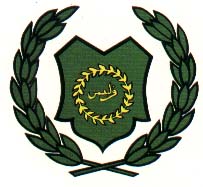
Perlis (ﭬﺮليس) / Palit (ปะลิส) steht vor dem Staatsbankrott. Raja Syed Alwi Jamalullail (1864 - 1943) (Syed Alwi ibni al-Marhum Syed Saffi Jamalullail) (جمل الليل) sbeantragt von Rama V. eine Anleihe von 230.000 Straits Dollars. Die Anleihe wird genehmigt unter folgenden Bedingungen
- Die Verwaltung von Perlis muss reformiert werden und einem neu zu schaffenden State Council unterstellt werden
- Perlis muss einen britischen Finanzberater anstellen so lange bis die Anleihe zurückbezahlt ist.
Die Anleihe wird bis 1930 zurückbezahlt. Finanzberater wird der Brite A. Duke.
Abb.: Lage von Perlis (ﭬﺮليس)
[Bildquelle: Constables Hand Atlas of India, 1893. -- Pl. 59]
"At the same time, the Ministry also used the Adviser system as a means of increasing its control over Kedah [قدح] and Perlis [ﭬﺮليس]. It did not sign secret treaties with Great Britain when it sent Advisers to Kedah and Perlis. It was in a strong position towards Kedah and Perlis, because these two states were in a condition of near bankruptcy. In 1905, it gave them loans in order to make them solvent on the condition that they must then accept Advisers. It sent two Englishmen, C.G. Hart and A. Duke, as the respective Advisers to Kedah and Perils. Since they were in a strong position, Hart and Duke were able to interfere more in Kedah's and Perils' administration than Graham [Walter Armstrong Graham, 1868 – 1949] was able to do in Kelantan [كلنتن ]. They founded State Legislative Councils, the members of which included the Adviser, the Deputy Adviser, the Sultan, and two other members of the local nobility. It was, however, the government, and not the Malay members in the majority, which had the right to initiate legislation in the State Councils. Hart and Duke also told the Sultans of Kedah and Perils to appoint district officers and commune elders. Furthermore, they strictly supervised the financial administration of both states, and saved any surplus from the revenue for the payment of outstanding debts and the interests on the government's loans. Hart went so far as to reduce the incomes of the Sultan and the other officials in order to increase the surplus from Kedah's revenue." [Quelle: Tej Bunnag [เตช บุนนาค] <1943 - >: The provincial administration of Siam from 1892 to 1915 : a study off the creation, the growth, the achievements, and the implications for modern Siam, of the ministry of the interior under prince Damrong Rachanuphap. -- Diss. Oxford : St. Anthonys College, Michaelmas Term 1968. -- 429 S., Schreibmaschinenschrift. -- S. 284f. -- Faire use]
1905-10-01
Eröffnung der Straßenbahnlinien der Siamese Tramway Company, Ltd.
Abb.: Straßenbahnlinien in Bangkok
[Bildquelle: Twentieth century impressions of Siam : its history, people, commerce, industries, and resources / ed. in chief: Arnold Wright. -- London [etc.] : Lloyds, 1908. -- S. 242]
"The Siamese Tramway Company, Ltd., is a Siamese enterprise. It owes its existence to the initiative of H.R.H. Prince Naradhip, who secured the concession for three tramlines in Bangkok in the year 1903. Having formed a Joint Stock Company for the working of the concession, lines were opened on October 1, 1905. Encouraged by the signal success of the Siam Electricity Company's tramways, great expectations of the company as a money-making concern were held by the promoters, and the shares went up to rather fantastic prices even before operations were commenced. The company works under the financial disadvantage of a very high Government track rent, and has therefore so far given the promoters scanty returns for the capital invested.
In 1907 the majority of shares were bought up by the Siam Electricity Company, Ltd., and the two companies are now under joint management.
The total length of the Siamese Tramway Company's lines is 11.63 miles, single lines, with 41 sidings, dividing in following lines :—
Dusit line 6.25 miles Hualampong line 3.75 miles City Wall line 1.63 miles The Dusit line runs from a point near the River Menam in Samsen district, through several minor streets, through the Dusit Park and along the City Wall, passing the Royal Palace on the riverside to the terminus at Ta Chang Wang Na.
The Hualampong line runs from a point near the Paknam railway station along Sapatoom road to Seekak Sao Ching Cha, and through Bantanao road to the terminus at Ta Chang Wang Na.
The City Wall line is a branch line running along the City Wall and connecting the two above-mentioned lines.
The rails are grooved, 334 kilogrammes per metre, joined with substantial fishplates and copper bonded, and the overhead material consists of double soft drawn copper wire No. 2/0, with overhead feeders. The system is divided into 4 feeder sections. All the cars are of Dick, Kerr & Co.'s single motor type of 25 h.p., the bodies being of teak-wood and constructed locally. There is accommodation for 56 cars in the company's 4 car-sheds. The total daily car-mileage on the company's lines is 2,819, and the number of cars in daily traffic is 30.
The company's power station is situated at Wat Samo Kreng, on the river. There are two 200-kw. Dick, Kerr & Co.'s 500-volt direct-current dynamos directly coupled to Browett, Lindley & Co.'s comp. engine. Steam is supplied by two Babcock & Wilcox boilers of 250 h.p. each."
[Quelle: C. Lamont Groundwater in: Twentieth century impressions of Siam : its history, people, commerce, industries, and resources / ed. in chief: Arnold Wright. -- London [etc.] : Lloyds, 1908. -- S. 192]
1905-10-01


"Der neue deutsche Vertreter, Legationsrat von Prollius [Adolph von Prollius, 1861 - 1942], ist eingetroffen. Er ist Junggeselle. Leider, möchte ich sagen. Die deutschen Diplomaten pflegen hier nicht länger als zwei bis drei Jahre zu bleiben. Sie sind fast stets unverheiratet. Seit ungefähr vierzehn Jahren hat Bangkok keine deutsche Dame im diplomatischen Kreise gesehen. Es scheint geradezu Prinzip zu sein, nur Junggesellen hier her zu schicken, was sehr bedauert wird. Gerade im gesellschaftlichen Verkehr ist der Einfluss der Frauen recht bedeutend. Augenblicklich ist die japanische Delegation der Sammelpunkt des gesellschaftlichen Lebens und zwar nur deswegen, weil der japanische Vertreter verheiratet ist. An zweiter Stelle stehen die Amerikaner. Die at homes der Frau Hamilton King [Cora Lee Seward, 1855 - 1936] sind immer recht gut besucht." [Quelle: Weiler, Luis <1863 - 1918>: Anfang der Eisenbahn in Thailand. -- Bangkok : Chalermnit, 1979. -- 282 S. : Ill. ; 19 cm. -- S. 133]
1905-10-07 - 1907-06-08

Es erscheint eine Artikelserie des US-Journalisten Samuel Hopkins Adams (1871 - 1958) gegen die Quacksalberei und "Patent Medicines" in den USA
- Series I: The Nostrum evil
- The nostrum evil. -- In: Collier's Weekly. -- 1905-10-07
- Peruna and the bracers. -- In: Collier's Weekly. -- 1905-10-28
- Liquozone. -- In: Collier's Weekly. -- 1905-11-18
- The subtile poisons. -- In: Collier's Weekly. -- 1905-11-18
- Preying on the incurables. -- In: Collier's Weekly. -- 1906-01-03
- The fundamental fakes. -- In: Collier's Weekly. -- 1906-02-17
- Series II: Quacks and quackery
- The sure-cure school. -- In: Collier's Weekly. -- 1906-07-14
- The miracle workers. -- In: Collier's Weekly. -- 1906-08-04
- The specialist humbug. -- In: Collier's Weekly. -- 1906-09-01
- The scavengers. -- In: Collier's Weekly. -- 1906-09-22
- The patent medicine conspiracy against the press. -- In: Collier's Weekly. -- 1906-11-04
- Strictly confidential. -- In: Collier's Weekly. -- 1906-11-17
- Aftermath. -- In: Collier's Weekly. -- 1907-01-05
- Patent medicines under the Pure Food Law. -- In: Collier's Weekly. -- 1907-06-08
Die Artikel erscheinen in Buchform:
Adams, Samuel Hopkins <1871 - 1958>: The great American fraud : articles on the Nostrum evil and quacks reprinted from Collier's Weekly. -- Chicago : American Medical association, 1907. -- 166 S. : Ill.
Abb.: Einbandtitel
1905-10-12
Königliches Dekret zur Gründung der Bibliothek für die Hauptstadt (หอสมุดสำหรับพระนคร), ab 1932-05-3: Nationalbibliothek (หอสมุดแห่งชาติ). Erster Oberbibliothekar ist bis 1917 Oskar Frankfurter (1852–1922)
Abb.: Dr. Oskar Frankfurter (1852–1922)
[Bildquelle: Twentieth century impressions of Siam : its history, people, commerce, industries, and resources / ed. in chief: Arnold Wright. -- London [etc.] : Lloyds, 1908. -- S. 251]
Abb.: Lage der ersten Bibliothek im Chakri Maha Prasat (Nr. 17)
[Bildquelle: Sodacan / Wikipedia. -- Creative Commons Lizenz (Namensnennung, share alike)]
Abb.: Chakri Maha Prasat, Bangkok, im Untergeschoß befand sich die erste Bibliothek für die Hauptstadt (หอสมุดสำหรับพระนคร)
[Bildquelle: Benoit Mortgat. -- http://www.flickr.com/photos/20916521@N05/2617853206. -- Zugriff am 2011-10-11. -- Creative Commons Lizenz (Namensnennung, share alike)]
Abb.: Nationalbibliothek, ca. 1909
[Bildquelle: Twentieth century impressions of Siam : its history, people, commerce, industries, and resources / ed. in chief: Arnold Wright. -- London [etc.] : Lloyds, 1908. -- S. 250]
Abb.: Lesesaal, ca. 1908
[Bildquelle: Twentieth century impressions of Siam : its history, people, commerce, industries, and resources / ed. in chief: Arnold Wright. -- London [etc.] : Lloyds, 1908. -- S. 250]
"When, in 1904, the king was desirous of commemorating the hundredth anniversary of the birth of his august father, his Majesty Phra Chom Klao, "by an institution of public utility which would redound to his glory," he decreed, with the unanimous consent of the other members of the royal family founders of the Vajirañāna Library, "that it should be established as the National Library."
The library was thus made accessible "to all persons interested in researches the benefit of which can be derived from books," and was opened on November 14, 1905, an annual grant of 25,000 ticals being made by the Government towards its upkeep."
The administration of the library was vested in a council consisting of a president and four members. They are appointed by the king and hold office for a term of three years, one member retiring each year. The chief librarian and the librarians are also appointed by the king, whilst the necessary number of clerks and minor officials are appointed by the council. The first council consisted of H.R.H. the Crown Prince, as President, H.R.H. Prince Sammot and Prince Damrong, Phya Prajakit, and Phya Boranburanuraks as members. This council was confirmed in office by his Majesty after the first year for a succeeding year.
It was quite apparent that the scope of the library had to be a restricted one, however desirable it might have been to form a general library in which all scientific branches were included. After mature consideration the committee decided, owing to the limited means at their disposal, to give their whole attention to the acquisition of the Thai literature, rightly thinking that printed books in foreign languages could be acquired at a future date, whilst any delay in the acquisition of Thai MSS. might prove fatal. According to the statutes three divisions were therefore formed—
- the Buddhist Section,
- the Thai Section,
- the General Section.
In the Buddhist Section were included the MSS. and books which had formerly formed the Ecclesiastical Library or had been kept in the Mandiradharma Hall, built during the reign of Phra Buddha Yot Fa to contain the sacred books. It was also to contain books in all languages having reference to Buddhism in its various aspects.
The Thai Section was to include the literature written in the different languages or dialects spoken or used by the Thai people, whilst the Foreign Section was to contain books written in foreign languages other than those added to the preceding section.
The task which was thus incumbent on the council was admittedly an arduous one, but no one could foresee its scope. Nothing was practically known about Thai literature. Printing was only introduced into Siam in 1836 and came into general use only in the reign of King Mongkut. In the troublous times which followed the destruction of Ayuthia many valuable MSS. had been lost ; those which were found were with few exceptions carelessly copied ; old and original MSS. did not seem available, and every scribe, it appeared, thought he was justified in altering and correcting MSS. In many cases simply the official title of the author was used and his name remains unknown, whilst the dating of MSS. leaves much to be desired. Generally speaking, it is not the author but rather the work, as such, which is honoured.
However, as soon as it was shown that the committee were in real earnest, donations poured in and are still pouring in from all sides, both from priest and layman. MSS. could be acquired at a small cost, and were placed in the library, and the time of scholars employed in the library is now fully taken up in cataloguing these treasures, for such they may be well described. It will necessarily take a long time before a catalogue raisonné of the MSS. can be issued, showing the literary activity of the Thai race, and at best it can only be considered a first attempt by which attention of scholars is directed to hitherto uncultivated fields.
The library has been able to collect and preserve for future generations MSS. which would otherwise have been destroyed. Illustrated MSS. have also been added ; and whilst they all show Indian influence, they bear testimony to the artistic taste of Siam. Inscriptions and facsimiles of inscriptions are collected, transcribed, and described, so as to be one day incorporated in a Corpus Inscriptionum. Photographs and seals are likewise collected in so far as they bear on history and customs.
Lately also the archives of the Ministry for the Interior have been added, and Government reports issued by the different departments are collected and made accessible.
In the collection of Buddhist MSS. the library has been also singularly lucky, and it has been able to add a great many MSS. to the large numbers it originally possessed. These MSS. came from all parts of the country, and they show that princes and commoners vied with each other in translating into the vernacular languages the sacred writings in Pali, in order to spread the Buddhist doctrine amongst the people.
Of course, the Foreign Section is still the weakest, even though the committee have already succeeded in adding to it some ancient books which throw light on Siamese history. Siam is a new country. References to Siam by ancient writers and travellers are very casual and few, and it is only through the intercourse which took place with European nations in the seventeenth century that we get an idea of how Siam presented itself to foreign observers. Since the destruction of Ayuthia in 1767 and the establishment of the capital in Bangkok, very few books have been published on Siam, and there are only occasional references to Siam in periodicals. These are, of course, as far as possible acquired. More attention was paid to Siam after the treaties with foreign Powers were made in 1855, and especially during the present reign more foreign publications treating on Siam have been issued. They will be acquired in time, even if an honest reviewer could only say about most of them that they are written without sufficient knowledge and with a certain bias and under preconceived ideas.
The foundation of the Historical Research Society, under the presidency of his Majesty the king, has also given a new impetus to those engaged in research work. The chief aim of the council is and must for some years to come be, to collect in the library everything which has reference to and shows the literary activity of the Thai race, so that it may truly deserve the name of a "National" Library."
[Quelle: O. Frankfurter in: Twentieth century impressions of Siam : its history, people, commerce, industries, and resources / ed. in chief: Arnold Wright. -- London [etc.] : Lloyds, 1908. -- S. 248ff.]
"Die Nationalbibliothek Thailands (Thai: หอสมุดแห่งชาติ, Aussprache: hɔ̌ː.sà.mùt.hɛ̀ŋ.tɕʰâːt) ist die Nationalbibliothek von Thailand in Bangkok. Die zuständige Regierungsstelle ist das Fine Arts Department des Ministeriums für Kultur. Geschichte
Bis zum Ende des 19. Jahrhunderts war das Konzept einer Bibliothek, also ein Aufbewahrungsort für Bücher, neu für das siamesische Königreich. Es gab zwar sowohl im Königspalast und in königlichen Tempeln (Wat) Sammlungen von Manuskripten, als auch Sammlungen von Büchern, die in anderen Tempeln des Königreiches im so genannten Hor Trai aufbewahrt wurden. Diese Sammlungen bestanden allerdings nur aus bestimmten Werken religiöser Natur, die aus Palmblatt-Manuskripten (เครื่องสานใบลาน – Krueang San Bai Lan) oder aus so genannten Samut Khoi-Manuskripten bestanden – สมุดข่อย „Büchern“ aus Papier, das aus der Khoi-Pflanze (Streblus asper) hergestellt wird.
Durch vermehrte Kontakte des Königshauses mit dem Westen kam das Bedürfnis nach der „Optimierung und Vermehrung“ (improvement and increase) von Wissen auf. So wurde die erste Bibliothek Thailands Anfang der 1880er Jahre zunächst als eine Art Klub für die thailändische Aristokratie gegründet. Sie wurde Vajirayana-Bibliothek (หอพระสมุดวชิรญาณ – Ho Phra Samut Wachirayan) genannt; unter diesem Namen war Prinz Mongkut zum Mönch ordiniert worden, bevor er König wurde.
Anlässlich der Feierlichkeiten zum 100. Geburtstags von König Mongkut verfügte sein Sohn König Chulalongkorn am 12. Oktober 1905, dass die drei bis dato existierenden königlichen Sammlungen der Vajirayana, der Mandira Dhamma (หอพระมณเฑียรธรรม – Ho Phra Monthian Tham) und der Buddhasasana Sangaha Library (หอพุทธสาสนสังคหะ – Ho Phuttha Satsana Sangkhaha) zusammenzuschließen und als Bibliothek für die Hauptstadt (หอสมุดสำหรับพระนคร – Ho Samut Samrab Phra Nakhon) im Erdgeschoss der Thronhalle Chakri Maha Prasat des Großen Palastes in Bangkok der Öffentlichkeit zugänglich zu machen seien.[1] Gleichzeitig wurde als Oberbibliothekar der deutsche Sprachwissenschaftler und Pali-Experte Oskar Frankfurter berufen.
Die „Mandira-Dhamma-Sammlung“ war 1793 von König Buddha Yodfa Chulaloke (Rama I.) initiiert worden, sie enthielt die erste Königliche Ausgabe des Pali-Kanon (Tipitaka) nach der Neugründung Siams. Später kamen weitere Editionen, wie eine der Mon und eine singhalesische dazu. Die Buddhasasana-Sangaha-Sammlung war im Jahr 1900 von Chulalongkorn selber ins Leben gerufen worden, der Bücher über den Buddhismus zentral zusammentragen wollte. Sie enthielt verschiedene Bücher in Khom-Schrift (einem alten Khmer-Alphabet), buddhistische Kommentare, Grammatiken der Pali-Sprache, Jatakas in verschiedenen Versformen, buddhistische Abhandlungen in Lao, Mon, Singhalesisch, Japanisch, Sanskrit und in lateinischer Schrift sowie Stein-Inschriften mit Bezug zum Buddhismus.
Später wurde die Bibliothek für die Hauptstadt in das „Eintracht-Gebäude“ (ศาลาสหทัยสมาคม – Sala Sahathai Samakhom) des Großen Palastes verlegt und im Jahr 1916 auf Veranlassung von König Vajiravudh in das so genannte Thawon-Watthu-Gebäude (ตึกถาวรวัตถุ) am Sanam Luang. Der Präsident des Verwaltungsrates wurde Prinz Damrong Rajanubhab berufen.
Die Hauptstadt-Bibliothek wurde später auf Englisch „Wachirayan National Library of Siam“ genannt. Mit dem Ende der absoluten Monarchie wurde am 3. Mai 1932 der Name der Bibliothek in „Nationalbibliothek Thailand“ (หอสมุดแห่งชาติ – Ho Samut Haeng Chat) geändert. Im Jahr 1947 wurde hinter dem Thawon-Watthu-Gebäude ein weiteres Gebäude errichtet, welches den Nachlass von Prinzen Damrong beherbergen sollte. Dieser bestand aus einer Sammlung von seltenen Büchern und persönlichen Objekten des Prinzen. Diese Sammlung wurde „Damrong Rajanubhab Library“ genannt. Sie befindet sich heute im Varadis-Palast (วังวรดิศ), der ehemaligen Residenz von Prinz Damrong (สมเด็จพระเจ้าบรมวงศ์เธอ พระองค์เจ้าดิศวรกุมาร กรมพระยาดำรงราชานุภาพ).
1962 entschied die thailändische Regierung, dass die Bibliothek ein neues Gebäude benötigt. Dafür wurde das Gelände an der Thanon Samsen (ถนนสามเสน) (Samsen-Straße), direkt neben dem königlichen Landungssteg Wasukri vorgesehen, von dem aus die traditionellen Barkenprozessionen ihren Anfang nehmen. Das neue Gebäude in thailändischem Baustil wurde am 5. Mai 1966 offiziell eröffnet. 2007 wurde ein Erweiterungsgebäude geplant, welches sich direkt hinter der bisherigen Bibliothek befindet. Baubeginn war gegen Ende 2008.
OberbibliothekareZweigstellen
- 1905–1917 Oskar Frankfurter (1852–1922)
- 1917–1929 George Coedès (1886–1969)
Nach und nach wurden die folgenden 17 Zweigstellen in den verschiedenen Provinzen eröffnet:
- In Zentralthailand:
- In Buri National Library Branch, Provinz Singburi (1972)
- Ratchamangkhalaphisek National Library Branch, Provinz Kanchanaburi (1997)
- Suphanburi National Library Branch (Provinz Suphanburi, 1998)
- Lat Krabang Chaloerm Prakiat National Library Branch, Lat Krabang, Bangkok (1990)
- In Nordthailand:
- Lamphun National Library Branch (Provinz Lamphun, 1978)
- Ratchamangkhalaphisek National Library Branch, Provinz Chiang Mai (1989)
- In der Nordostregion:
- Prakhon Chai National Library Branch, Provinz Buriram (1985)
- King Rama IX National Library Branch, Provinz Nakhon Ratchasima (1987)
- Queen Sirikit National Library Branch, Provinz Nakhon Phanom (1994)
- In der Ostregion:
- Chon Buri National Library Branch (Provinz Chonburi, 1983)
- Ratchamangkhalaphisek National Library Branch, Provinz Chanthaburi (1990)
- In Südthailand:
Funktion
- Wat Charoen Samanakit National Library Branch, Provinz Phuket (1993)
- Nakhon Si Thammarat National Library Branch (Provinz Nakhon Si Thammarat, 1978)
- Wat Donrak National Library Branch, Provinz Songkhla (1982)
- Kanchanaphisek National Library Branch, Provinz Songkhla (1997)
- Queen Sirikit National Library Branch, Provinz Songkhla (1999)
- Queen Sirikit National Library Branch, Provinz Trang (1999)
Die Nationalbibliothek soll: [2]
Bestand
- Materialien des nationalen intellektuellen und kulturellen Erbes in der Form von Stein-Inschriften, Manuskripten, traditionellen Büchern, Palmblatt-Manuskripten, gedruckten Publikationen und audio-visuellen und elektronischen Medien über Thailand aus dem In- und Ausland erwerben, katalogisieren, analysieren, erhalten und aufbewahren,
- Bilbliotheks-Dienstleistungen und Verwaltung erforschen und weiterentwickeln,
- die oben unter 1. erwähnten Materialien im gesamten Land der Öffentlichkeit zugänglich zu machen,
- ein nationales Informations-System und interbibliothekare Zusammenarbeit computergestützt überwachen,
- Verwaltung von ISBN und ISSN
- die vollständige Sammlung einheimischer Materialien sowie Materialien in Bezug auf Thailand verwalten und erhalten,
- die angeschlossenen Bibliotheken und Informationszentren beraten.
Im April 2008 verfügten die Sammlungen der Nationalbibliothek über die folgenden Materialien: [2]
Einzelnachweise
- Allgemeine Sammlung:
- 2.903.175 Monographien
- 67.163 Periodika
- 20.439 Zeitungen
- 150.614 „seltene Bücher“
- 389.294 Manuskripte
- 98.554 Nichtbuchmaterialien
- 487 Microfilme
- Digitale Sammlung:
- 27 Inschriften
- 341 traditionelle Thai-Bücher (Samut Khoi)
- 49 Palmblatt-Manuskripte
- 708 „seltene Bücher“
- Audio-visuelle Sammlung:
- 337 Video-Bänder
- 2.734 Musik-Kassetten, CD, usw.
- 23.879 Musik-Noten
- 2.105 Fotos, Bilder
Quellen
- ประกาศจัดการหอพระ สมุดวชิรญาณ ให้เป็นหอสมุดสำหรับพระนคร รัตนโกสินทร์ ศก ๑๒๔. In: Royal Gazette. 22, Nr. 29, 15. Oktober 1905, S. 619.
- „Conference of Directors of National Libraries“, Quebec City, Canada, 13. AUGUST 2008 (in englischer Sprache - letzter Zugriff am 10. März 2010)
- Patrick Jory: Books and the Nation: The Making of Thailand's National Library. In: Journal of Southeast Asian Studies, Volume 31, Number 2, September 2000, Singapore University Press, Singapore. ISSN: 0022-4634
[Quelle: http://de.wikipedia.org/wiki/Nationalbibliothek_Thailand. -- Zugriff am 2011-10-11]
"Oskar Frankfurter (auch Oscar Frankfurter; * 23. Februar 1852 in Hamburg; † 1. Oktober 1922 ebendort) war ein deutscher Sprachwissenschaftler und Thaiist. Oskar Frankfurter studierte an den Universitäten Berlin und Göttingen Sanskrit und wurde 1874 promoviert.
Oskar Frankfurter wurde nach Thailand, dem seinerzeiten Siam, entsandt, um am Hofe von König Chulalongkorn (Rama V., 1868–1910) als Übersetzer für deutsch-thailändische Projekte zu arbeiten. Er hatte sich zuvor als Kenner des Pali ausgezeichnet und für die Universität Oxford zusammen mit Robert Childers einen Katalog von Pali-Manuskripten erstellt.[1] Sein Handbook of Pali wird immer noch aufgelegt.[2] In Bangkok erhielt er zwar nur 20 US-Dollar im Monat, doch war er mehr an der Möglichkeit interessiert, seine wissenschaftlichen Studien fortzusetzen.[3]
Frankfurter war zunächst für den Prinzen Devawongse (สมเด็จพระเจ้าบรมวงศ์เธอ กรมพระยาเทวะวงศ์วโรปการ) tätig und blieb in dieser Stellung, als dieser 1881 zum ersten Außenminister von Siam wurde. 1895 holte ihn der belgische Berater von König Rama V. (Chulalongkorn), Rolin Jacquemyns, als Berater und Generalsekretär. 1901 trat Jacquemyns zurück, Frankfurter wurde ins siamesische Innenministerium berufen.
Frankfurter war seit Oktober 1905 Oberbibliothekar der Nationalbibliothek Thailands in Bangkok [4], wo er für die zentrale Aufbewahrung von Inschriften des Landes sorgte. Es gelang ihm, aus der bis dahin vernachlässigten Institution eine ansehnliche Bibliothek zu formen, die neben ausländischer Literatur über das Land auch siamesische Werke sammelte. Nachdem Siam 1917 im Zuge des Ersten Weltkriegs an die Seite der Alliierten getreten war, wurde er als deutscher Staatsangehöriger 1918 nach Indien deportiert. Sein Nachfolger wurde George Coedès (1886–1969). Frankfurter war auch Gründungsmitglied der Siam Society, die sich die Bewahrung und Erforschung der thailändischen Geschichte, Kultur und Natur zum Ziel gesetzt hat. Bei der Gründung wurde er ehrenamtlicher Schriftführer, 1906 wurde er zum zweiten Präsidenten gewählt und blieb dies zu seiner Ausweisung 1918, die ihn zusammen mit den anderen im Lande lebenden deutschen Bürgern in ein britisches Internierungslager nach Indien führte. Im Frühjahr 1920 konnte Frankfurter nach Deutschland zurückkehren.
Oskar Frankfurter starb am 1. Oktober 1922 in Hamburg.
Eine Sammlung seiner Briefe befindet sich in der Österreichischen Nationalbibliothek.[5]
SchriftenEinzelnachweise
- List of Pali Manuscripts in the Bodleian Library, Oxford. In: Journal of the Pali Text Society. 1, 1882, S. 30f. (In dieser Liste sind nur acht Manuskripte enthalten: Vessantara-Jataka-nissaya, Nemi-jataka-nissaya, Mahosadha-Jataka-nissaya, Buddhavamsa, Dhammasanginippakarana and nissaya, 2 Samantapasadika-nissaya und ein Manuskript in Pali-Birmanisch).
- Handbook of Pali: being an elementary grammar, a chrestomathy, and a glossary. Williams, London 1883. (Volltext bei Open Library)
- The Old-Prussian Language. In: Notes and Queries 1883, S. 157.
- Elements of Siamese Grammar : with appendices. 1900. )Volltext bei Open Library)
- King Mongkut. in: Journal of the Siam Society (Bangkok). 1, 1904, S. 191–207.
- Siamese missions to Ceylon in the 18th century. In: Journal of the Siam Society (Bangkok). 4, pt. 1, 1907, S. 23–25.
- The Romanizing of Siamese. In: Journal of the Siam Society (Bangkok). 4, 1907, S. 28–32.
- Events in Ayuddhaya from Chulasakarj 686–966. In: Journal of the Siam Society (Bangkok). 6, 1909, S. 3ff.
- The mission of Sir James Brooke to Siam. In: Journal of the Siam Society (Bangkok). 8, 1911, S. 19–32.
- The attitudes of the Buddha. In: Journal of the Siam Society (Bangkok). 10, 1913, S. 21–35.
- Buddhistische Zeitrechnung in Siam. In: Anthropos. 8, 1913, S. 736–737.
- Proposed system for the transliteration of Siamese words into Roman characters. In: Journal of the Siam Society (Bangkok). 10, 1913, S. 1–21.
- The unofficial mission of John Morgan, merchant, to Siam in 1821.In: Journal of the Siam Society (Bangkok). 11, 1914, S. 1–8.
- Sixteen tables of Thai alphabets current in Siam. Vajiranana National Library, Bangkok 1914.
- Oskar Frankfurter, Robert Childers: Classified List of Pali Manuscripts in the Bodleian Library, Oxford. Manuskript. Oxford 1880.
- Oskar Frankfurter: Handbook of Pali: being an elementary grammar, a chrestomathy and a dictionary. Asian Education Services 1999, ISBN 978-8120614284
- Andreas Stoffers: Oskar Frankfurter – ein Leben für Thailand. In: Thailand-Rundschau der Deutsch-Thailändischen Gesellschaft. Band 9, H. 2, 1996, S. 15–17.
- http://www.zeno.org/Meyers-1905/A/Tschulalongkorn
- http://ezines.onb.ac.at:8080/moravec/pub/dokprov1.htm Provenienzregister der Briefsammlungen der ÖNB (letzter Zugriff am 29. August 2008)´"
[Quelle: http://de.wikipedia.org/wiki/Oskar_Frankfurter. -- Zugriff am 2011-10-11]
1905-10-14

Abb.: In den Kolonien: Der gute Pater: "Dieser da ... für fünfzig Francs ... Sie können mit ihm alles machen ... ich habe ihn selbst dressiert." / von Léon Fourment. -- In: L'Assiette au Beurre <Paris, Frankreich>. -- No 237. -- 1905-10-14
1905-10-20

"Gelegentlich einer vertraulichen Aussprache mit dem Minister der Öffentlichen Arbeiten habe ich feststellen können, dass die Siamesen insofern mit der Eisenbahnverwaltung unzufrieden sind, als es diesen nach fünfzehnjährigem Bestehen noch nicht gelungen ist, die Verwaltung siamesisch zu gestalten. In der Tat sind alle leidenden Stellen durch Europäer und zwar zumeist Deutsche besetzt. Ich habe daraufhin eine Denkschrift ausgearbeitet, nach welcher die Verwaltung im Laufe der Jahre in siamesische Hände übergehen soll. Die Sache ist sehr kostspielig und dauert sehr lange. Danach sollen jedes Jahr fünf Jungens im Alter von 12 Jahren nach Deutschland geschickt werden, welche dort 12 Jahre bleiben. Sechs Jahre Schule, sechs Jahre Polytechnikum und zwei Jahre im preußischen Staatseisenbahndienst. Danach werden die jungen Burschen als Bauassistenten bei uns eingestellt und avancieren dann nach einer gewissen Regel. Ein Menschenalter dürfte darüber hinweggehen bis schließlich die Siamesen völlig selbständig ihre Eisenbahnen betreiben. In den Grundzügen hat der Minister meinen Plan bereits dem König entwickelt der denselben billigt. Ich muss allerdings zugeben, dass Herr Gehrts [Hermann Gehrts, 1854-1914] darin schwer gesündigt hat, dass er die Siamesen gewissermaßen systematisch von der Leitung fernzuhalten gesucht hat. Ich fasse die Sache ganz anders auf. Es ist nach meiner Ansicht Deutschlands viel würdiger, die Siamesen zu lehren, ihre Bahnen selbst zu verwalten als sie davon abzuhalten, um einige Stellen mit Deutschen besetzen zu können." [Quelle: Weiler, Luis <1863 - 1918>: Anfang der Eisenbahn in Thailand. -- Bangkok : Chalermnit, 1979. -- 282 S. : Ill. ; 19 cm. -- S. 134f.]
1905-11

Der Japaner Watanabe Tomoyori eröffnet mit "Japanese Cinematograph" das erste Kino in Bangkok. Er zeigt japanische Dokumentarfilme und westliche Filme. หนังใหญ่ ("japanisches Schattenspiel") wird zum Begriff für Kino. An westlichen Filmen zeigt er z.B.
- Ali Baba et les quarante voleurs (1902)
- Les apaches de Paris (1905)
Abb.: Filmplakat
Abb.: Filmplakat
[Bildquelel: ru.Wikipedia. -- Public domain]
1905-11-18 - 1910-11-23

Gilbert John Elliot-Murray-Kynynmound, 4th Earl of Minto (1845 - 1914) ist Governor-General and Viceroy of India
Abb.: Gilbert John Elliot-Murray-Kynynmound / von Leslie Ward (1851 - 1922)
[Bildquelle: Vanity fair. -- 1905-06-29]
1905-12

Beijing (北京, China): im Feng Tai Photography Studio wird der erste chinesische Film gedreht: Der Berg "Ding Jun" (定军山).
Abb.: Filmszene
1905-12-05 - 1908-04-07

Sir Henry Campbell-Bannerman (1836 - 1908) ist Prime Minister Großbritanniens.
Abb.: Henry Campbell-Bannerman / von Leslie Ward (1851 - 1922)
[Bildquelle: Vanity fair. -- 1899-08-10]
1905-12-06 - 1905-12-23
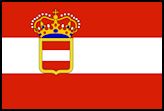
In Paknam (ปากน้ำ) und Bangkok ankert das österreichische Torpedoschiff S.M.S. Panther. Es kommt von Singapur und fährt weiter nach Saigon. Reisezweck: Missionsreise nach Australien, Überreichung des Beglaubigungsschreibens des Gesandten in Siam.
Abb.: S.M.S. Panther, 1906
[Bildquelle: Wikipedia. -- Public domain]
1905-12-21


Der britische Gesandte Ralph Spencer Paget (1864 – 1940) an den britischen Außenminister Edward Grey, 1st Viscount Grey of Fallodon (1862 – 1933) über US-Prof. Edward Henry Strobel (1855 - 1908), General Adviser der Regierung in Bangkok:
"Mr Strobel has certainly produced a remarkable change in the methods of the Siamese government, so far as their foreign relations are concerned. Before his arrival, when questions of a disagreeable nature arose, they resorted to evasion, procrastination, and every conceivable device to avoid facing the real issue. All that has now disappeared, and their methods are now prompt, straightforward and businesslike. Questions of importance I have found it possible to settle with Mr Strobel in a few minutes conversation. It is scarcely necessary to say that this change is appreciated by all the foreign representatives. Mr Strobel, however, tells me that he finds it very difficult to keep matters on a friendly footing with the French Legation, who pursue a policy of petty annoyance." [Zitiert in: Tuck, Patrick J. N.: The French wolf and the Siamese lamb : the French threat to Siamese independence, 1858-1907. -- Bangkok : White Lotus, 1995. -- 434 S. : Ill. ; 22 cm. -- ISBN 974-8496-28-7. -- S. 221f.]
ausführlich: http://www.payer.de/thailandchronik/ressourcen.htm
Phongpaichit, Pasuk <ผาสุก พงษ์ไพจิตร, 1946 - > ; Baker, Chris <1948 - >: Thailand : economy and politics. -- Selangor : Oxford Univ. Pr., 1995. -- 449 S. ; 23 cm. -- ISBN 983-56-0024-4. -- Beste Geschichte des modernen Thailand.
Ingram, James C.: Economic change in Thailand 1850 - 1870. -- Stanford : Stanford Univ. Pr., 1971. -- 352 S. ; 23 cm. -- "A new edition of Economic change in Thailand since 1850 with two new chapters on developments since 1950". -- Grundlegend.
Akira, Suehiro [末廣昭] <1951 - >: Capital accumulation in Thailand 1855 - 1985. -- Tokyo : Centre for East Asian Cultural Studies, ©1989. -- 427 S. ; 23 cm. -- ISBN 4896561058. -- Grundlegend.
Skinner, William <1925 - 2008>: Chinese society in Thailand : an analytical history. -- Ithaca, NY : Cornell Univ. Press, 1957. -- 459 S. ; 24 cm. -- Grundlegend.
Vella, Walter F. <1924 - 1980>: Chayo! : King Vajiravudh and the development of Thai nationalism / Walter F. Vella, assisted by Dorothy B. Vella. -- Honolulu : Univ. Press, 1978. -- 347 S. : Ill. ; 25 cm. -- ISBN 0-8248-0493-7
Mitchell, B. R. (Brian R.): International historical statistics : Africa and Asia. -- London : Macmillan, 1982. -- 761 S. ; 28 cm. -- ISBN 0-333-3163-0
Kludas, Arnold <1929 - >: Die Seeschiffe des Norddeutschen Lloyd 1857 bis 1970. -- Augsburg : Bechtermünz, 1998. -- 165 + 168 S. : Ill ; 28 cm. -- ISB 3-86047-262-3. -- Standardwerk.
Ongsakul, Sarassawadee <สรัสวดี อ๋องสกุล>: History of Lan Na / translated by Chitraporn Tanratanakul. -- Chiang Mai : Silkworm, 2005. -- 328 S. : Ill. ; 23 cm. -- ISBN974-9575-84-9. -- Originaltitel: ประวัติศาสตร์ลัานนา (2001)
Barmé, Scot: Woman, man, Bangkok : love, sex, and popular culture in Thailand. -- Lanham : Rowman & Littlefield, 2002. -- 273 S. : Ill. ; 24 cm. -- ISBN 0-7425-0157-4
Van Beek, Steve <1944 - >: Bangkok, then and now. -- 2. ed. -- Nonthaburi : AB Publications, 2001. -- 131 S. : Ill. 22 x 29 cm. -- ISBN: 974-87616-0-6
ศกดา ศิริพันธุ์ = Sakda Siripant: พระบาทสมเด็จพระจุลจอมเกล้าเจ้าอยู่หัว พระบิดาแห่งการถ่ายภาพไทย = H.M. King Chulalongkorn : the father of Thai photography. -- กรุงเทพๆ : ด่านสุทธา, 2555 = 2012. -- 354 S. : Ill. ; 30 cm. -- ISBN 978-616-305-569-9
Donko, Wilhelm M. <1960 - >: Auf den Spuren von Österreichs Marine in Siam (Thailand). -- Berlin : epubli, 2012. -- 540 S. : Ill. ; 22 cm. -- ISBN 978-3-8442-2504-4